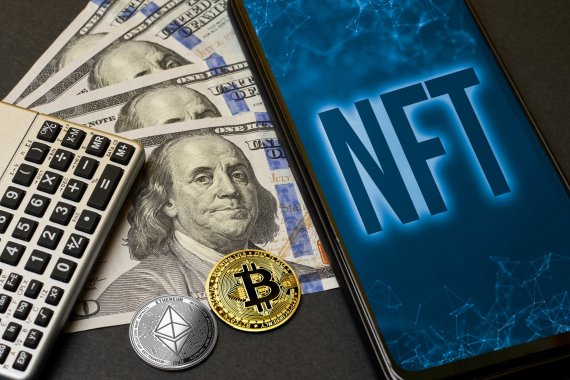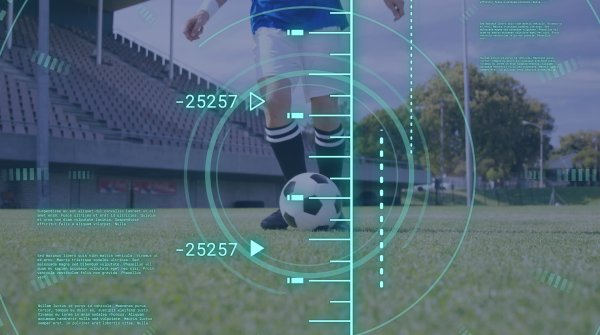
The abbreviation NFT stands for “non-fungible token”. The word “fungible” describes a good that can be easily exchanged - such as money, gold or a digital currency like Bitcoin. While such a Bitcoin cannot be duplicated, it is as good as any other.
However, if an asset is not fungible, it has unique properties - such as a house or the Mona Lisa. NFTs are therefore digital tokens that can be thought of as certificates of ownership for virtual or physical assets. With NFTs, digital artworks such as image files or video clips can be „tokenized“ to create a certificate that can be bought and sold.
This gives them uniqueness, creating a scarcity that increases their value - after all, the Mona Lisa is only valuable because it is unique. So wherever people are willing to spend a lot of money on a passion for collecting, NFTs can provide the technical basis for a business model. And few groups collect as enthusiastically as sports fans.
While the technology has been available since 2017, it only became known to the general public in March this year, when Christie's auction house sold an NFT of the painting “Everydays - The First 5000 Days” by US digital artist Mike Winkelmann, known as Beeple, for $69 million. And int the sports world as well NFTs attracted the attention of the public.
For example, a digital trading card of American football player Robert Gronkowski, known as Gronk, changed hands for $412,476 on an NFT marketplace.... It's no wonder that in Germany, too, the number of Google searches for the term "NFT" jumped from negligible to 25,000 per month in March.
That's true. But it’s equally true that everyone can hang a copy of the Mona Lisa in their living room, while only very few can afford the original. The idea behind NFTs is to give digital artworks a certificate that defines what is an original and what is a copy - comparable to a signed print of an artwork.
NFT fans believe the technology will redefine ownership in a digital world, while skeptics wonder why there are people paying millions for images and video clips that are easily accessible for anyone online.
NFTs are based on the technology of cryptocurrencies such as Bitcoin or Ethereum. And as with these currencies, when digital art is sold - whether JPGs, GIFs, MP3s or videos - information about who owns what is stored in a decentralized directory called the blockchain. Indeed these works of digital art can be reproduced just like the Mona Lisa or a painting by Picasso or Chagall.
But the information stored in the blockchain - like, where is the NFT and who owns it - makes it possible to clearly distinguish between original and copies. These records of information are difficult to falsify because the blockchain is maintained by thousands of computers around the world.Most NFTs are part of the Ethereum blockchain. NFTs can also contain smart contracts. These can ensure, for example, that every time a digital artwork is sold, the artist is allocated a share of the proceeds.
OpenSea, Mintable and Rarible are the three main platforms for buying NFTs. Here, users can bid on items just like they would on eBay or other internet auction sites. The only prerequisites are to both own cryptocurrency to pay for an NFT and to have a digital wallet set up to deposit, store and withdraw digital currency.
For the sports business, NFTs offer countless potential applications, as collecting plays a major role in fan culture. For example, the North American basketball league NBA has teamed up with blockchain company Dapper Labs to create NBA Top Shots, an online marketplace where fans can buy and sell video clips of professional basketball games. Launched in October 2020, the NBA offers limited edition art and videos depicting memorable moments from American professional basketball. The clips have generated more than $500 million in sales so far. One video, which features basketball superstar LeBron James performing a dunk in honor of Kobe Bryant, grossed $387,000 alone....
Combining physical goods with digital tokens is also interesting for the sports business. Sneaker manufacturer Nike, for example, has patented a method using an NFT system to verify the authenticity of sneakers, which they call CryptoKicks. When a customer buys a pair of CryptoKicks, they simultaneously receive a digital token that ensures the authenticity of the shoes, even as they move from buyer to buyer. “When a consumer buys a real pair of shoes, a digital representation of a shoe can be generated, associated with the consumer, and mapped to a cryptographic token, with the digital shoe and cryptographic token together representing a 'CryptoKick'”, the patent states.
Linking computer games to NFTs also offers interesting possibilities. Sorare, for example, is a fantasy football game where players take on the role of managers, buying and selling footballers for their teams. Partnerships with top clubs such as Atletico Madrid, Juventus Turin or Bayern Munich allow the platform to offer players of those teams for sale in the game. But unlike other football games, the number of players is limited by the blockchain. For example, the 35-year-old Portuguese Cristiano Ronaldo in the Juventus jersey from the 2020/2021 season exists exactly once in the game. Sorare user “Camembert” invested $289,920 US dollars to own this rarity.
Creating an NFT is a surprisingly simple process. Firstly, you of course need the digital work of art you would like to sell. Secondly, you need a wallet and cryptocurrency as both the creation and the sales offer are subject to charge. All you need to do now is to register an account on a NFT marketplace and upload your artwork in a supported file format. Once uploaded your NFT is created. As you see, you don't need any expert knowledge or in-depth experience with cryptocurrencies or the blockchain
Image: Marco Verch; New Non-fungible tokens or NFT technology doing Fourth Industrial Revolution revolution. License: CC-BY 2.0
 SportsTechUnlocking the Future of Sports with AI
SportsTechUnlocking the Future of Sports with AI
- ISPO awards
- Mountain sports
- Bike
- Design
- Retail
- Fitness
- Health
- ISPO Job Market
- ISPO Munich
- ISPO Shanghai
- Running
- Brands
- Sustainability
- Olympia
- OutDoor
- Promotion
- Sports Business
- ISPO Textrends
- Triathlon
- Water sports
- Winter sports
- eSports
- SportsTech
- OutDoor by ISPO
- Heroes
- Transformation
- Sport Fashion
- Urban Culture
- Challenges of a CEO
- Trade fairs
- Sports
- Find the Balance
- Product reviews
- Newsletter Exclusive Area
- Magazine





